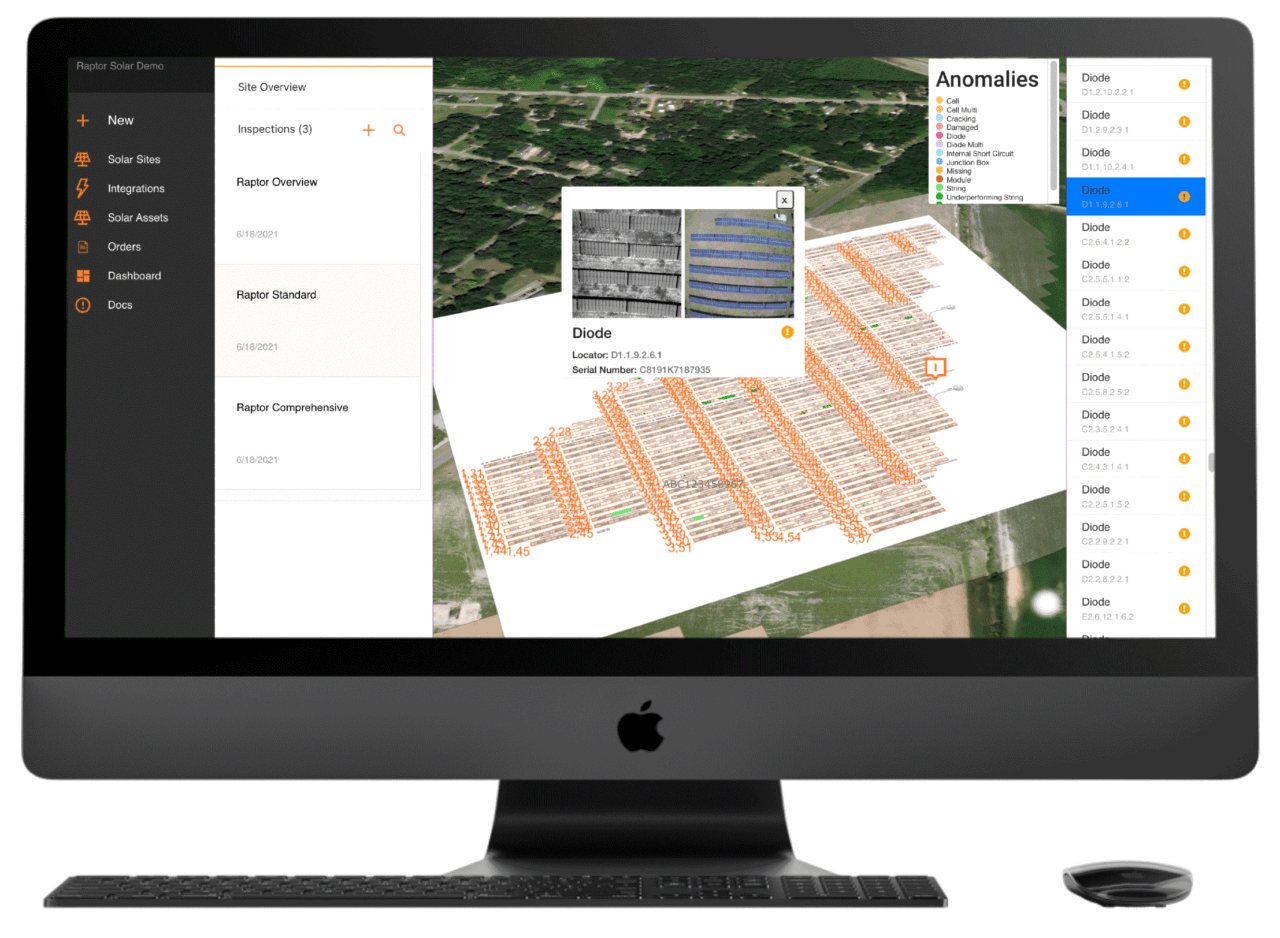Posted On 8/10/22

Raptor Maps found that power affected by anomalies increased to 2.63% last year as large-scale solar installations become more common.
BOSTON, MA, Aug 10, 2022 ― Raptor Maps, the leading provider of solar lifecycle management software, is one of several industry leaders that contributed to kWh Analytics’ 2022 Solar Risk Assessment Report. The report provides wide-ranging insights into risks associated with the solar industry.
The 25-page report focuses on three key risk areas: Financial pressures related to cost overruns, underperforming assets as well as how extreme weather conditions are introducing elements of uncertainty into solar asset operations.
Raptor Maps’ contribution focuses on solar asset anomalies, finding that power affected by anomalies has surprisingly increased from 1.74% in 2018 to 2.63% in 2021. The solar software provider used machine learning to analyze anomalies from thermal inspections across 20 GW of utility and C&I systems across the globe. C&I and utility scale PV systems generate tens to hundreds of thousands of dollars in additional production every year as anomalies are identified, prioritized and efficiently addressed. The upward trend is largely driven by increases in several balance of system (BOS) anomalies associated with strings, inverters, combiners and trackers in addition to module and sub-module level issues.
The report includes contributions from kWh Analytics, Wood Mackenzie Power & Renewables, BloombergNEF, SolarGIS, NovaSource Power Services, Solar Support, DNV, NREL, PV Evolution Labs, STS, VDE Americas, PowerFactors and Clean Power Research.
Research from kWh Analytics looks into financial modeling risk, finding that 92% of lost EBITDA of solar assets is due to underproduction. The causes of lost EBITDA include poor availability, unrealistic production forecasts and lower-than-expected irradiance, according to their findings.
A contribution from Wood Mackenzie Power & Renewables focuses on the large cost increases for installing PV systems. The company’s research notes that new-build solar capital expenditures have increased by 8% year-over-year for a typical 100 MW PV system.
There are also contributions from firms detailing how extreme weather is affecting solar installations. A section of the report by VDE Americas presents data showing that comprehensive hail mitigation strategies — in particular, tilting modules so they aren’t horizontal — can greatly reduce power losses. Research from DNV examines how uneven terrain at solar projects can result in energy losses 6% above pre-construction estimates, but that new backtracking algorithms can recover some of that energy loss. And findings from Clean Power Research look into how stakeholders need to examine the extent to which smoke from wildfires can affect power yield.
“The analysis by Raptor Maps and other industry leaders provides valuable data about the evolving risks associated with large-scale solar installations,” explains Raptor Maps CEO and co-founder Nikhil Vadhavkar. “By quantifying and understanding these risks, solar asset owners and operators can implement mitigation strategies across the solar lifecycle to increase power production, reduce costs and ultimately increase project and portfolio IRR.”
The report highlights the need for solar energy asset owners and operators to have reliable ways to identify and address anomalies affecting performance on their assets. Raptor Solar, Raptor Maps’ new software-as-a-service platform, features digital twins (or digital maps) of your solar sites, provides regularly refreshed thermal inspection analytics and allows users to normalize data to standard conditions and compare inspection findings over time. So asset owners and operators can identify issues before they compound, reduce risk and ultimately lift ROI.

Download a copy of the report here.
About Raptor Maps
Raptor Maps offers advanced analytics, insights and productivity software for the entire solar lifecycle. The Raptor Solar software platform features a digital twin of your solar sites, aerial thermal inspections, data standardization and normalization, serial number mapping, warranty claim features, equipment records, mobile tools and more — all powered by their industry-leading data model. With intelligence for the entire solar industry — asset owners, managers, O&M, engineers, EPCs, financiers and OEMs — you can standardize and compare data across installations, increase performance, reduce risk and ultimately lift ROI.
Contact us
Raptor Maps is building the digital foundation for a more resilient and scalable solar. From construction to end-of-life, we are your long-term software partners to ensure your sites are operating as expected and producing reliable energy to support the energy transition.


